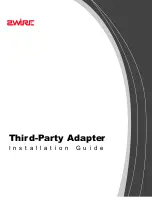
149
9
Photometrics
How to create and modify IES files
and photometric webs.
You can use photometric webs to create custom luminous intensity distributions
(LIDs) . Use IES files to import manufacturer’s lighting specifications into your
model.
Summary
In this chapter, you learn about:
•
Using photometric data
•
Creating and editing photometric webs
•
The IES standard file format
•
Using LID conversion utilities.
Using Photometric Data
You can interactively model any luminous intensity
distribution (LID) for a luminaire using the Photo-
metric Web editor. You can load and view
photometric data files provided by various manu-
facturers into the photometric definition. You can
also create your own using the Photometric Web
editor.
About Photometric Webs
Photometric webs are used to represent general
LIDs. You can use LIDs in the definition of all three
types of light sources: point, linear, and area sources.
To describe the directional distribution of the light
emitted by a source, Lightscape approximates the
source by a point light placed at its photometric
center. With this approximation, the distribution is
characterized as a function of the outgoing direction
only. The luminous intensity of the source for a
predetermined set of horizontal and vertical angles
is provided, and the system can compute the lumi-
nous intensity along an arbitrary direction by
interpolation.
Summary of Contents for LIGHTSCAPE
Page 1: ...SULO 4 31 93 36034333308355 LJKWVFDSH...
Page 18: ...NOTES 10...
Page 110: ...NOTES 102...
Page 136: ...NOTES 128...
Page 166: ...NOTES 158...
Page 176: ...NOTES 168...
Page 202: ...NOTES 194...
Page 210: ...NOTES 202...
Page 248: ...NOTES 240...
Page 294: ...NOTES 286...
Page 308: ...NOTES 300...
Page 316: ...NOTES 308...
Page 324: ...NOTES 316...
Page 342: ...Glossary 334 Lightscape...
Page 360: ...Index ix 352 Lightscape...
Page 362: ......
















































